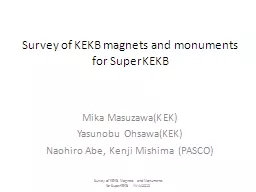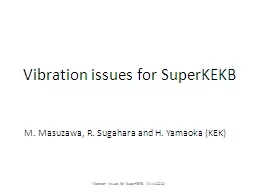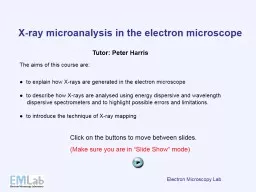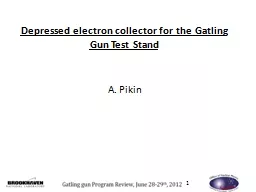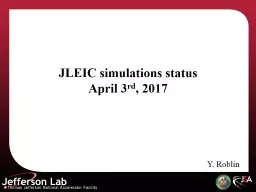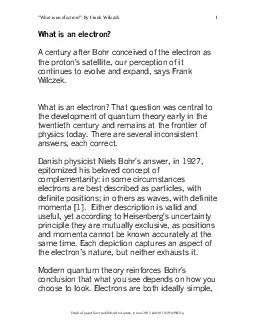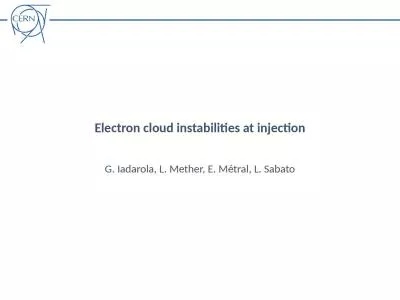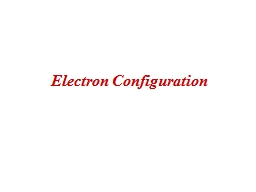PPT-Electron cloud simulations for SuperKEKB
Author : pamella-moone | Published Date : 2015-11-30
YSusakiKEKACCL 13 Jan 2010 Low Emittance Rings 2010 CERN Positron beam emits synchrotron radiation Electrons are produced at the chamber wall by photoemission Electrons
Presentation Embed Code
Download Presentation
Download Presentation The PPT/PDF document "Electron cloud simulations for SuperKEKB" is the property of its rightful owner. Permission is granted to download and print the materials on this website for personal, non-commercial use only, and to display it on your personal computer provided you do not modify the materials and that you retain all copyright notices contained in the materials. By downloading content from our website, you accept the terms of this agreement.
Electron cloud simulations for SuperKEKB: Transcript
Download Rules Of Document
"Electron cloud simulations for SuperKEKB"The content belongs to its owner. You may download and print it for personal use, without modification, and keep all copyright notices. By downloading, you agree to these terms.
Related Documents




